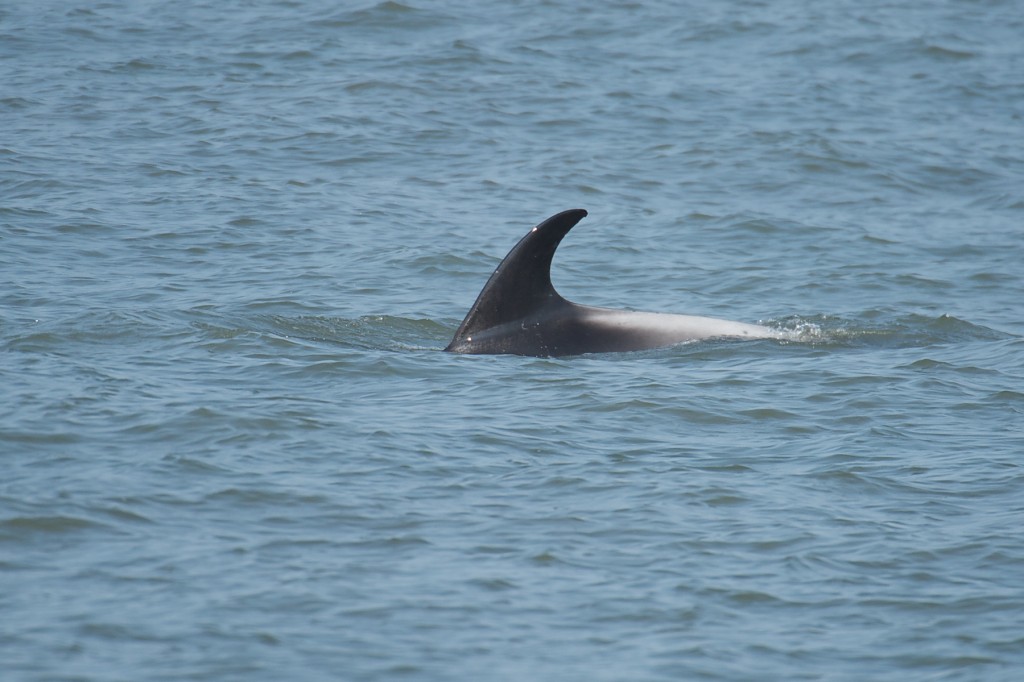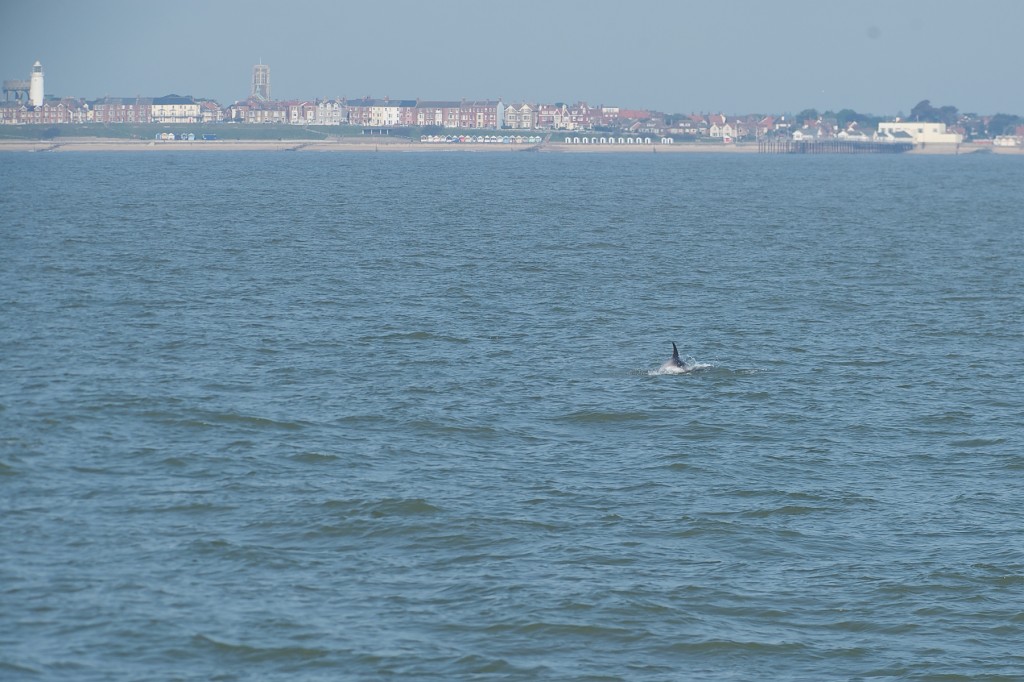Not all records get to us immediately, but it doesn’t mean they don’t hold valuable details about marine mammal life around our varied coastline.
Particular species tend to be associated with particular areas; some of these areas can be very species-rich wihilst others may favour just a few species. The latter is the case for Suffolk which is best known for harbour porpoise only.
We were very interested to receive a detailed report from Dr Martin Perrow who’d been conducting a boat-based survey off the Suffolk coast. Dr Perrow suspected that he and his team (aboard the Sea Badger) may have had an unusual sighting when he submitted this June 2013 sighting to us just a few weeks ago.
It was the skipper of the boat who first saw the animals and the team looked on, anticipating a grey seal or harbour porpoise which would be more usual for the area.
The next time that one of the animals surfaced, Martin was able to see that these were in fact dolphins, and he set about establishing which. Luckily, being out on a survey, they were well equipped to document the dolphins and gain a positive ID from the accompanying photographs.
 Figure 1: Despite a very close encounter and excellent photography skills and equipment, it was at times difficult to distinguish this dark-finned dolphin, but from views like these, Dr Perrow had narrowed it down to either bottlenose or white-beaked dolphin.
Figure 1: Despite a very close encounter and excellent photography skills and equipment, it was at times difficult to distinguish this dark-finned dolphin, but from views like these, Dr Perrow had narrowed it down to either bottlenose or white-beaked dolphin.
With five dolphins now surrounding the boat, the team were able to see much more clearly and snapped away at what turned out to be definitely a pod of white-beaked dolphins.  Figure 2: Here you catch the first glimpse of the characteristic white colouration behind the dorsal fin.
Figure 2: Here you catch the first glimpse of the characteristic white colouration behind the dorsal fin.
 Figure 3: A muscular tail for a powerful swimmer.
Figure 3: A muscular tail for a powerful swimmer.
This species is regular offshore in the southern North Sea, but in fact we have never had a sighting of white-beaked dolphin so close to the Suffolk shore! You can see just how close in they were from the picture below.
 Figure 4: White-beaked dolphin with Southwold in the near distance.
Figure 4: White-beaked dolphin with Southwold in the near distance.
Ideally, we would have sea-watchers covering every inch of the country throughout the year, recording effort and sightings on a regular basis. However, until then we’ll continue to rely on opportunistic sightings from the public to supplement our database.
If you would like to join the crew of the Sea Badger in helping to document life around our shores, you can submit your casual sightings to us online, or email sightings@seawatchfoundation.org.uk to find out how to conduct both land- and sea-based watches of your own.
We look forward to hearing from you!
The Sea Watch Foundation team
























